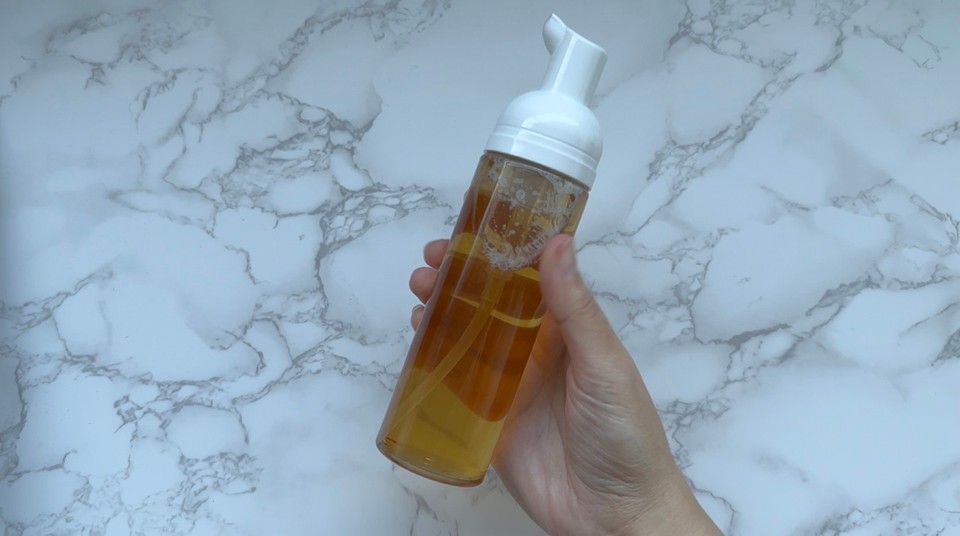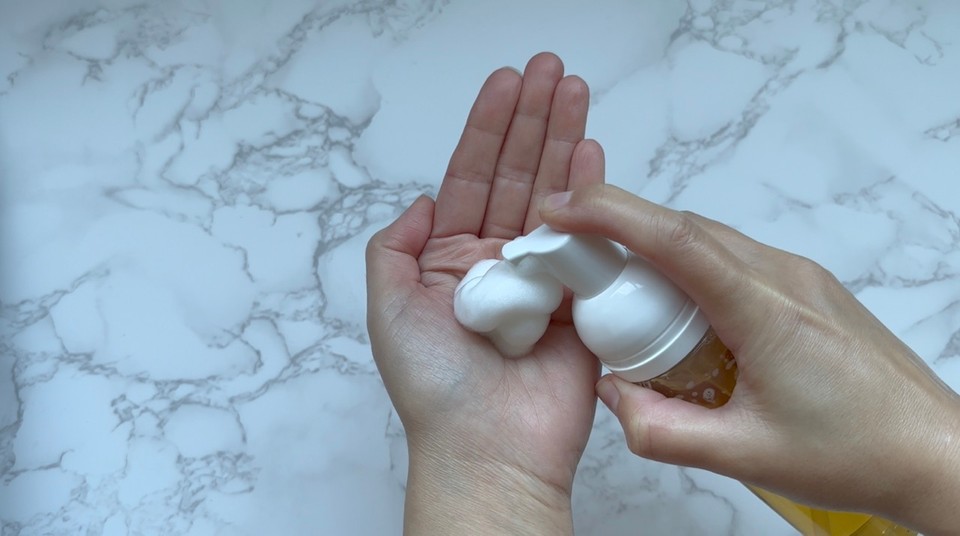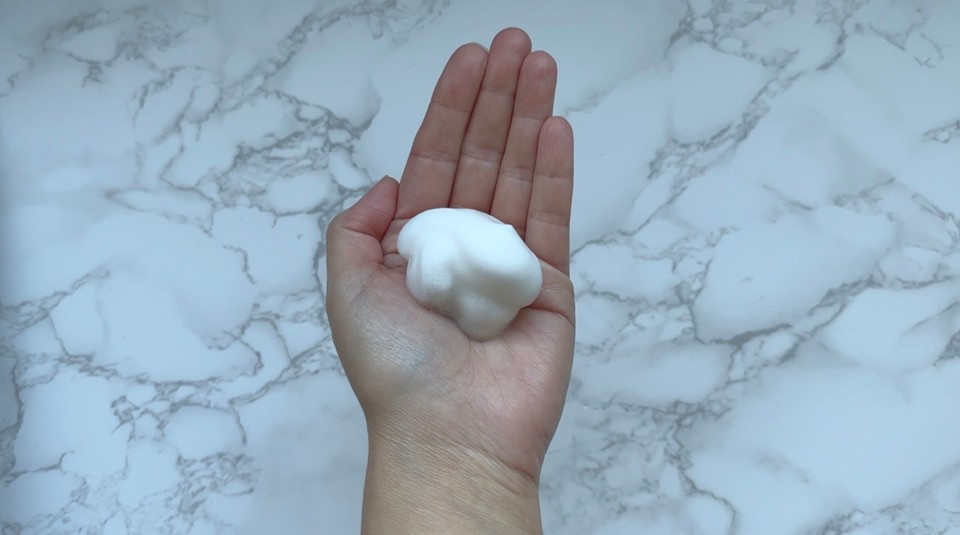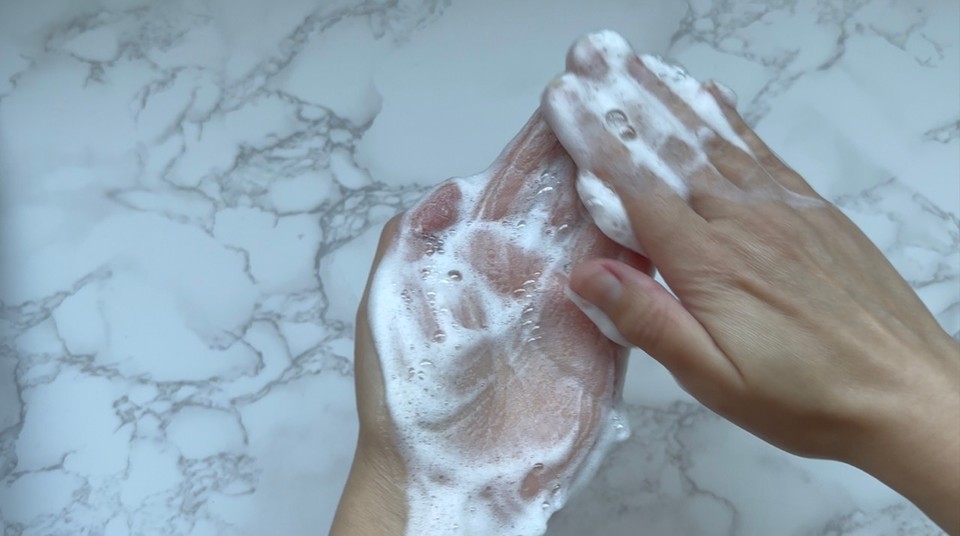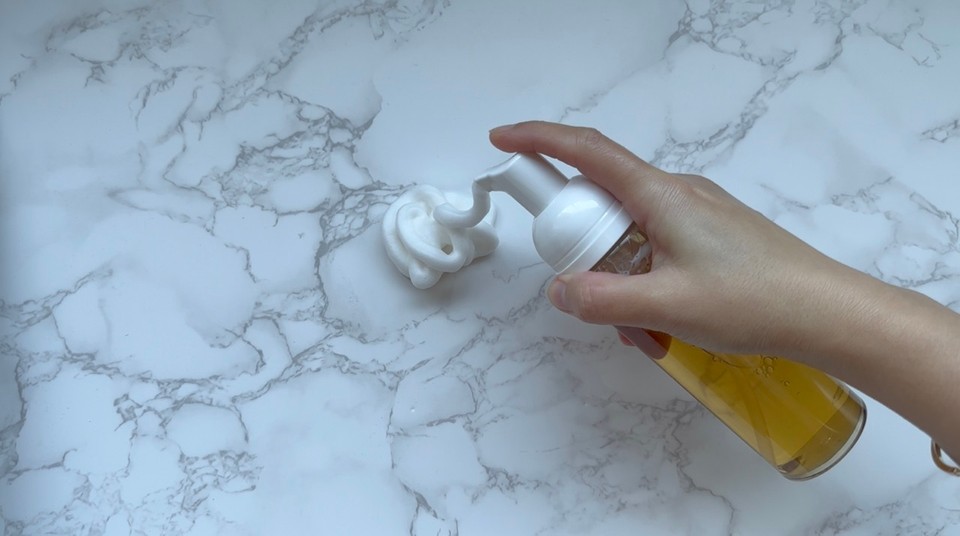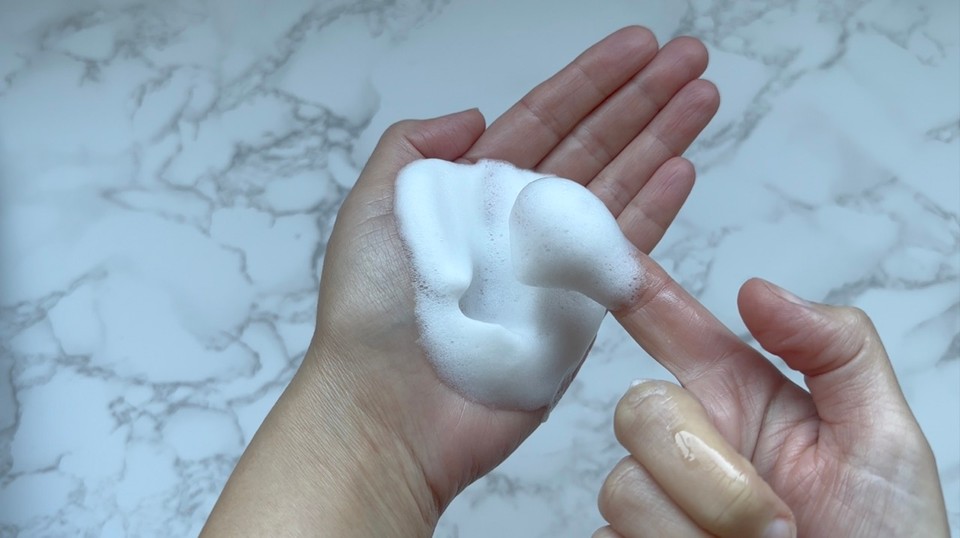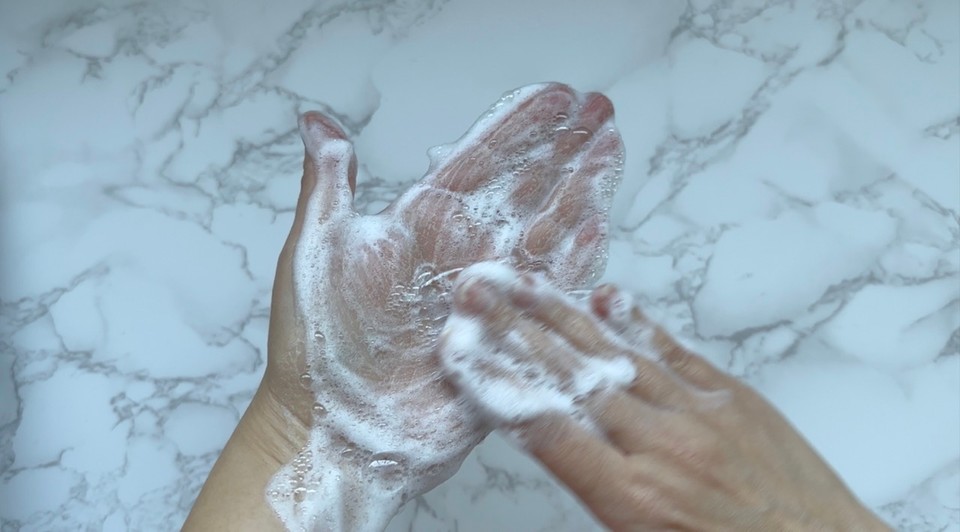Glycolic Acid Foaming Cleanser
| Phase | Ingredient | Percent (%) | Weight (g) |
|---|---|---|---|
| Phase A | Distilled water | 57.20 | 57.2 |
| Glycerin | 8.00 | 8 | |
| Phase B | Decyl glucoside | 14.00 | 14 |
| Coco betaine (INCI - Aqua, Coco Betaine) | 10.00 | 10 | |
| Phase C | Citric acid | 2.40 | 2.4 |
| Phase D | Glycolic acid 99% (INCI - Glycolic Acid) | 4.00 | 4 |
| Phase E | Green tea extract (INCI - Glycerin, Aqua, Camellia Sinensis Leaf Extract) | 2.00 | 2 |
| Malva flower extract (INCI - Glycerin, Aqua, Malva Sylvestris Flower Extract) | 1.00 | 1 | |
| Cosgard (INCI - Benzyl Alcohol, Dehydroacetic Acid, Aqua) | 0.80 | 0.8 | |
| Fragrance (INCI - parfum) | 0.60 | 0.6 |
You can help support my website and channel through the “buy me a coffee” page.
Here is the link: https://www.buymeacoffee.com/diycosmetica
Your support helps me keep sharing here more information and more formulas.
If you have oily or acne-prone skin, you will benefit from a glycolic acid cleanser due to its exfoliating properties. As an alpha hydroxy acid (AHA), glycolic acid gently removes the outermost layer of dead skin cells, reducing the likelihood of pore-clogging and acne formation. This exfoliation also helps to control excess oil production, a common concern for those with oily skin.
Over time, with consistent use, glycolic acid can significantly improve skin texture, making it smoother and more even. It also helps diminish the appearance of acne scars and hyperpigmentation, leading to a clearer and more radiant complexion. Additionally, the regular shedding of dead skin cells promoted by glycolic acid encourages the regeneration of new skin cells, which can result in a more youthful and vibrant skin appearance.
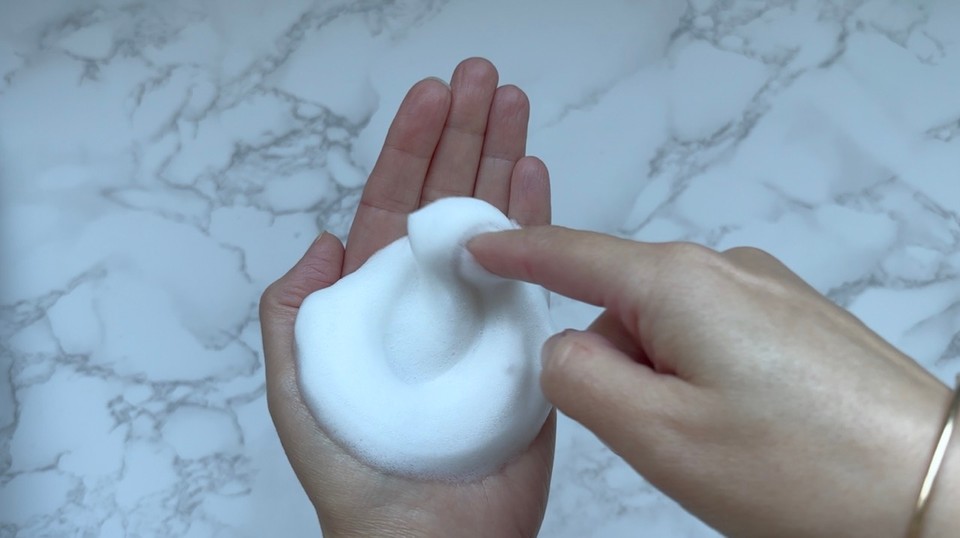
You can use this glycolic foam cleanser every day, or you can use it 2-3 times a week. You can combine this cleanser with a milder face cleanser, such as the Creamy Solid Body And Face Cleanser or this Face Cleanser Base (with many possibilities to personalize) .
Using sunscreen regularly, when using glycolic acid products, is important, as it can increase skin's sensitivity to the sun.
Check out this post here if you want to make a face exfoliate cleanser. Also, if you have oily skin, you might want to check this post with an oil free face cream formula.
In this formula, I combined two mild surfactants: Decyl glucoside and Coco betaine.
Decyl glucoside is a natural, plant-derived surfactant known for its mild and gentle nature. Due to its low potential for skin irritation, it suits sensitive skin.
Decyl glucoside efficiently removes dirt and oil without stripping the skin of its natural oils. This makes it ideal for all skin types, including sensitive and easily irritated skin.
Coco betaine, derived from coconut oil, is another gentle surfactant. Coco betaine helps condition the skin, leaving it soft and smooth and also adds to the rich and luxurious lather.
Together, these ingredients offer a deep cleanse, effectively eliminating dirt and excess oil, a significant advantage for those with oily or acne-prone skin. This duo works harmoniously to ensure the skin retains its natural moisture, minimizing irritation and preserving its protective barrier. Combining these surfactants also enhances the texture and feel of the foam, making the cleansing experience more delightful.
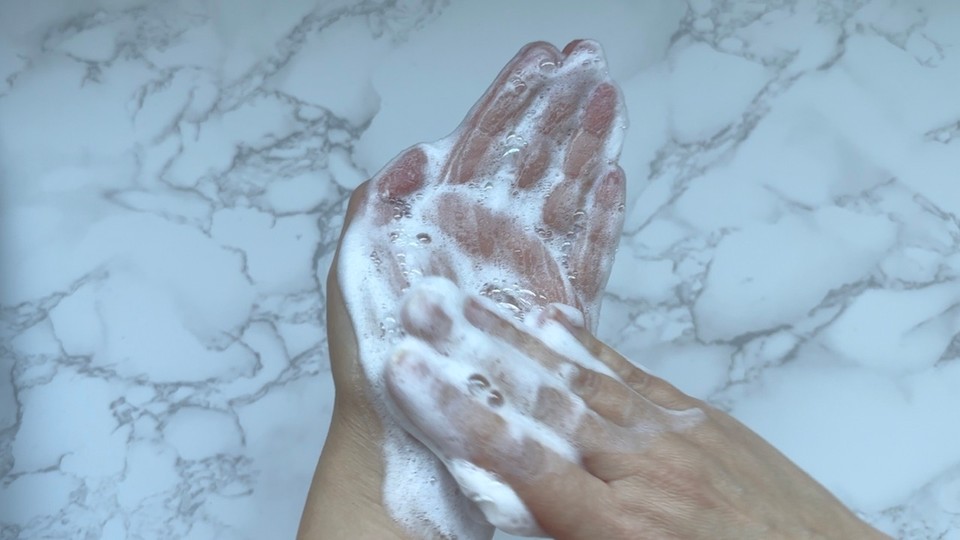
I also add citric acid to this formula.
Adding citric acid to a glycolic acid foaming cleanser boosts its effectiveness and safety. It is a natural alpha hydroxy acid (AHA) from citrus fruits. It brings multiple benefits to the mix, but its key function in a glycolic acid-based cleanser is fine-tuning and stabilizing the pH level. For skincare products containing AHAs like glycolic acid, a well-balanced pH is essential for ensuring they work effectively and reduce the risk of skin irritation.
Glycolic acid reaches peak effectiveness in a slightly acidic environment, ideally between a pH of 3.8 and 4.3. Citric acid plays a pivotal role in maintaining this level of acidity, vital for allowing glycolic acid to penetrate the skin deeply and provide thorough exfoliation. Citric acid isn't just a supporting ingredient; it's an AHA that enhances the cleanser's ability to slough off dead skin cells, leading to a brighter skin tone and smoother texture. To read more about pH adjustments in cosmetics, check this post.
Additionally, the antioxidant qualities of citric acid are a bonus, offering protection against environmental aggressors like pollution and UV rays.

The next ingredient is glycolic acid. I used 99% glycolic acid in a powder form. I used 4% of glycolic acid in this formula.
At 4%, glycolic acid is strong enough to work well but gentle enough to avoid irritating the skin. This makes it great for everyday skincare routine, particularly if you have oily or acne-prone skin.
Glycolic acid, an alpha hydroxy acid (AHA), is excellent at exfoliating. It loosens and removes dead skin cells, making them easy to wash off. This helps to unclog pores and prevent acne from forming. Being water-soluble, glycolic acid mixes well in the cleanser and penetrates the skin deeply during washing. This deep clean is good for oily skin, which often has more oil and dirt build-up.
Glycolic acid doesn’t just get rid of dead skin cells; it also helps new skin cells grow. This can make your skin look fresher and younger and reduce fine lines and wrinkles. For oily skin, glycolic acid can help manage the oil produced. It keeps the pores clear, reducing oil build-up and making the skin less shiny and clearer overall.
Two more active ingredients in this formula are green tea extract and malva flower extract.
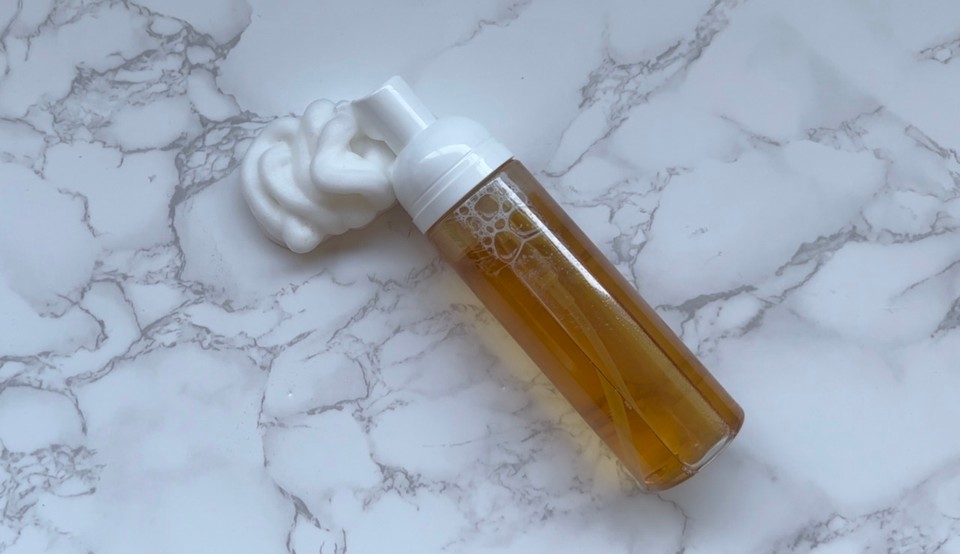
Green tea is packed with antioxidants, like catechins such as EGCG, which protect the skin from damage caused by pollution and sun exposure. These factors can speed up aging and worsen skin problems. Green tea extract is also great for reducing inflammation, which is helpful in a glycolic acid cleanser since glycolic acid can sometimes irritate the skin, especially if it's sensitive. The calming effect of green tea extract helps ease redness and irritation, making the cleanser nicer to use.
Green tea extract is helpful for people with oily or acne-prone skin. It helps control the amount of oil the skin produces, preventing pores from getting clogged and reducing the chances of getting acne. Green tea extract also has hydrating qualities, which are important to keep the skin's moisture level balanced, especially when using a product with glycolic acid that exfoliates the skin.
Additionally, green tea extract can fight acne-causing bacteria, making it an excellent ingredient for a foaming cleanser for acne-prone skin. When used together with glycolic acid, green tea extract not only lessens irritation but also boosts the acid's exfoliating and skin-refreshing benefits. This combination makes the cleanser more effective in keeping the skin healthy and glowing.
The extract I use has an olive-green color, which colors the product and gives the final product this color.

You can replace the green tea extract with chamomile, aloe vera, or cucumber extract.
Malva flower extract comes from the Malva sylvestris plant and is great for calming irritated skin. This is helpful in a cleanser with glycolic acid because glycolic acid can sometimes irritate, especially if you have sensitive skin.
The extract is also good at keeping your skin hydrated. It helps prevent the dryness that glycolic acid can sometimes cause. Plus, it's naturally anti-inflammatory, meaning it can reduce redness and soothe sensitive or inflamed skin.
You can swap the Malva extract with calendula extract or glycerin.
For my preservative, I used Cosgard.
Cosgard is effective in a broad pH range, typically from 2 to 7. This makes it suitable for formulations like glycolic acid cleansers, which usually have a lower pH around 4. Its effectiveness isn't compromised at this acidic pH level.
Cosgard complies with ECOCERT and COSMOS standards, so it is my go-to preservative for many cosmetic products.
If you are using a different preservative type, choose one that can perform in this pH range (around 4). If you have to increase the % of the preservative, reduce the added amount from the distilled water (for example, if you need to use 1% preservative, change the distilled water amount to 57%).

The fragrance is optional; you don't have to add fragrance. If you decide to make a fragrance-free cleanser, add 0.6% from the fragrance, to the distilled water amount (so 57.8% distilled water and 0% fragrance).
I used a citrus fragrance, which complements this cleanser. However, you can choose any scent you like for your cleanser.
Use the calculator to adjust the amount you wish to make.
Method:
- In a beaker, add the distilled water and the glycerin and mix to combine.
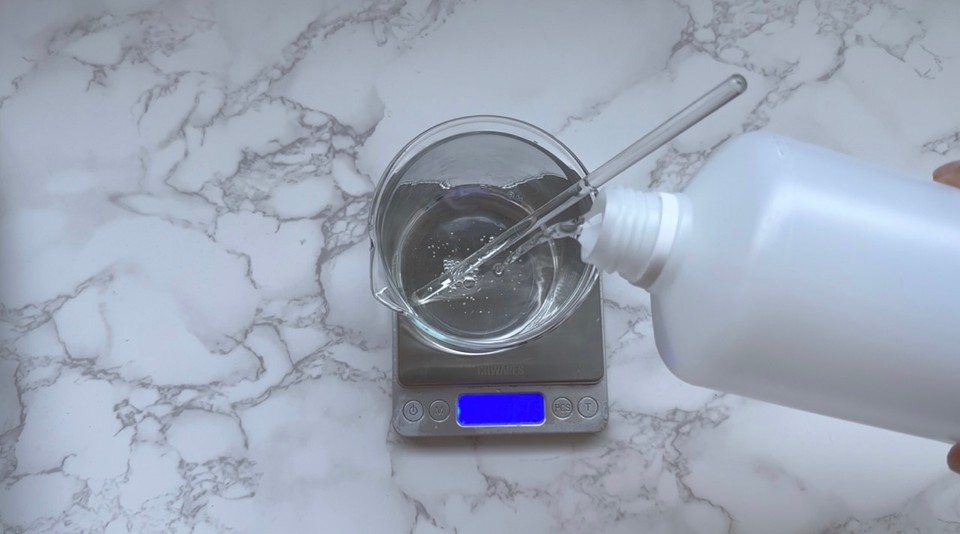
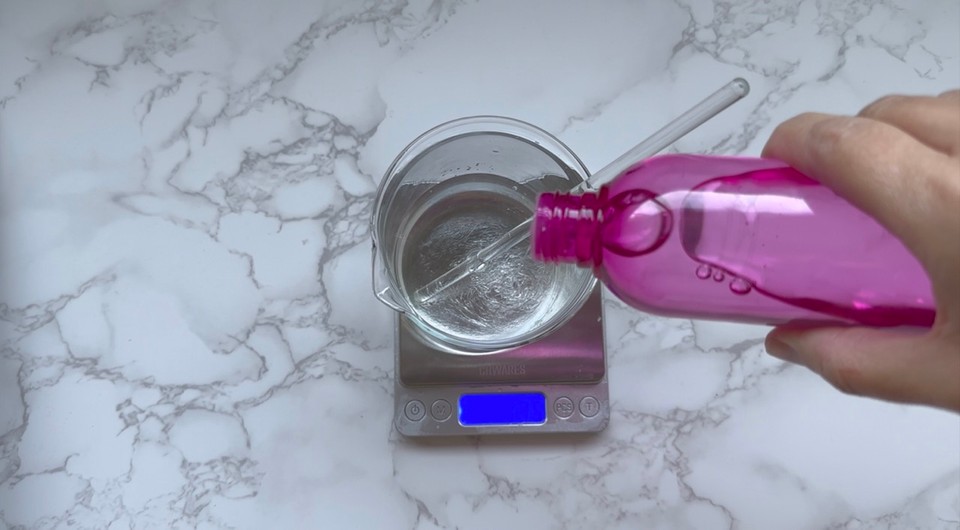
- Add the surfactants (phase B) and stir gently to minimize the foaming.
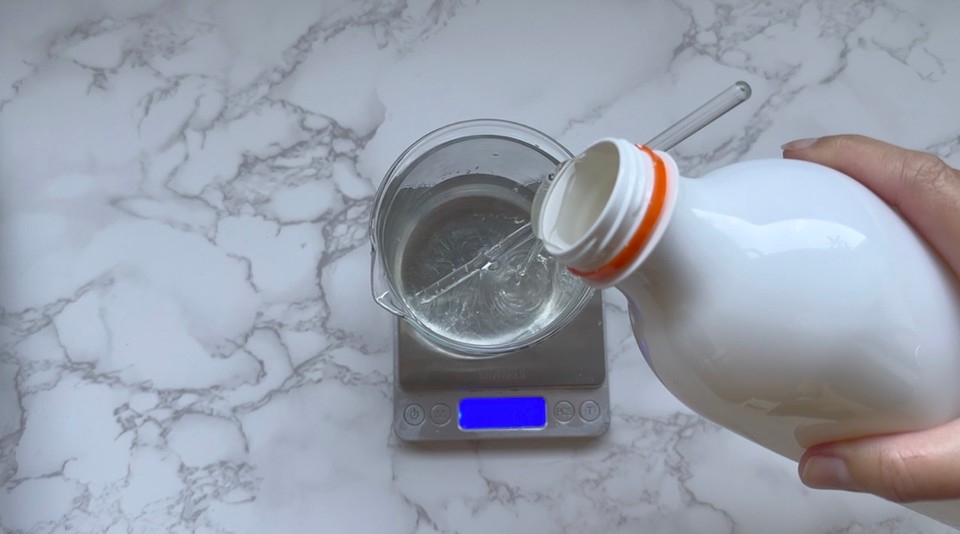

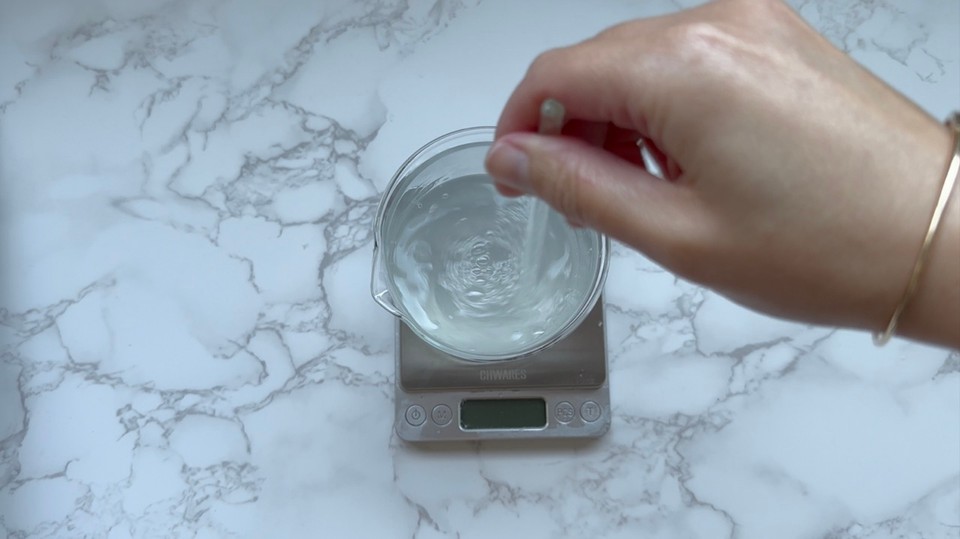
- Add the citric acid and stir gently to combine and dissolve the citric acid completely.
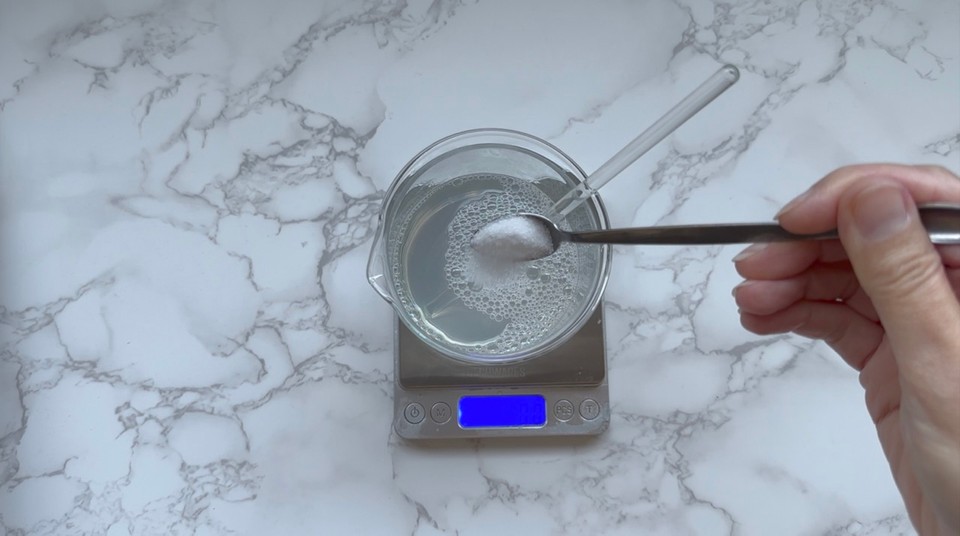
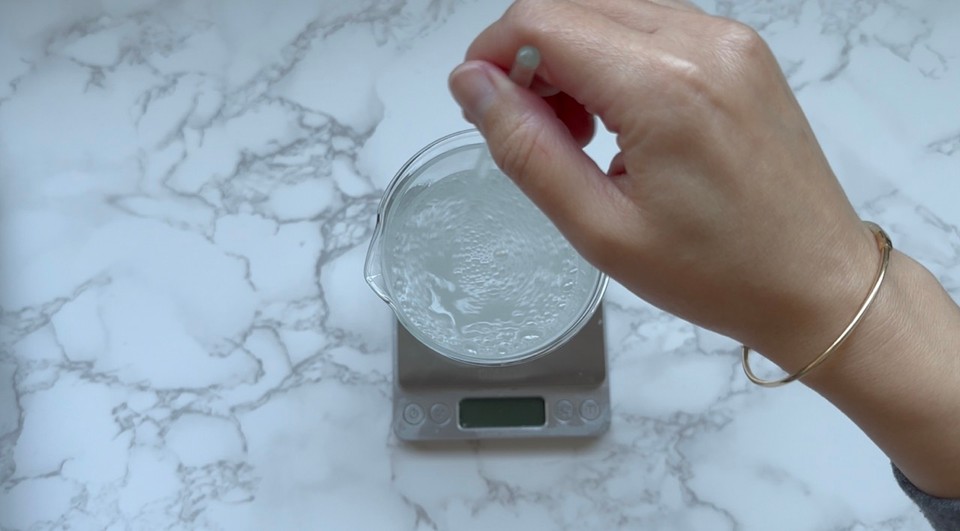
- Add the glycolic acid powder and mix to dissolve.
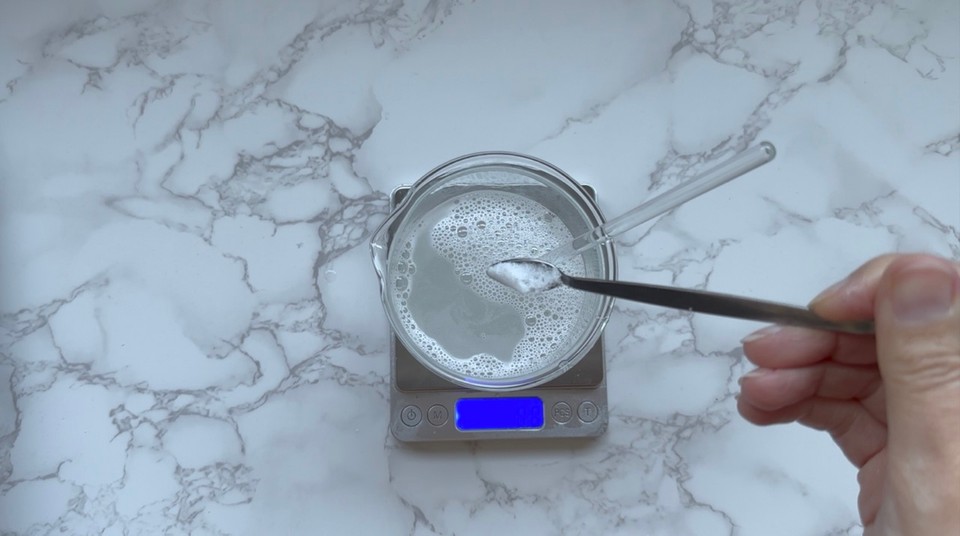
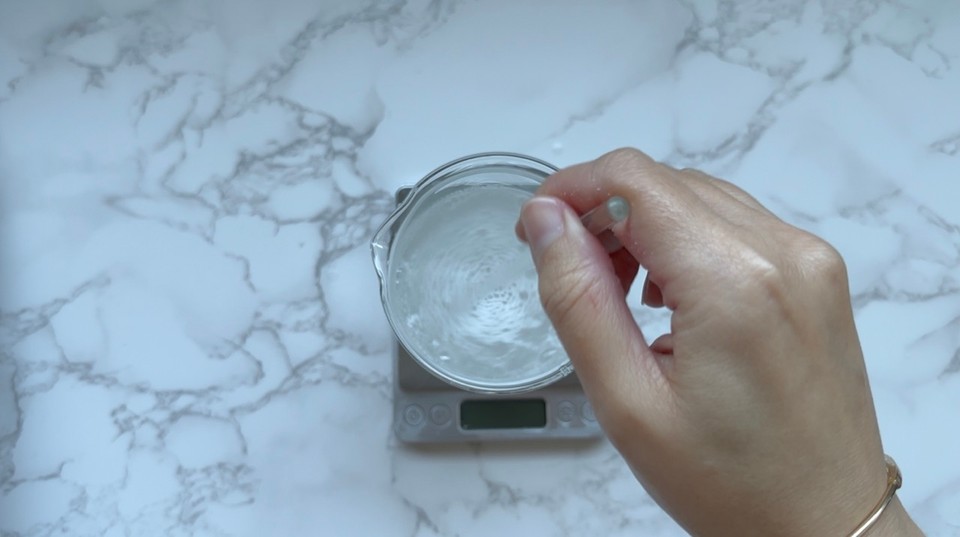
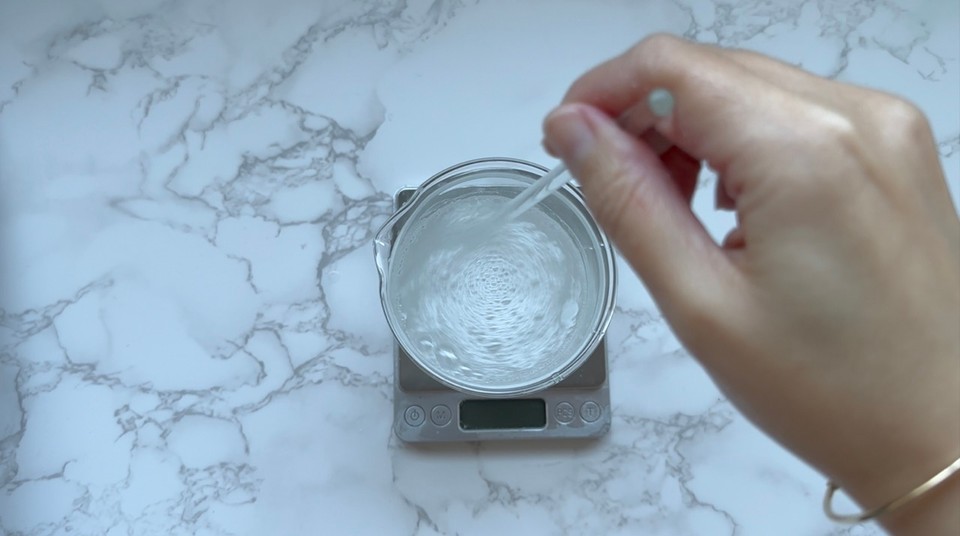
- Check the pH level and adjust it if necessary. It should be between 3.8 and 4.3.
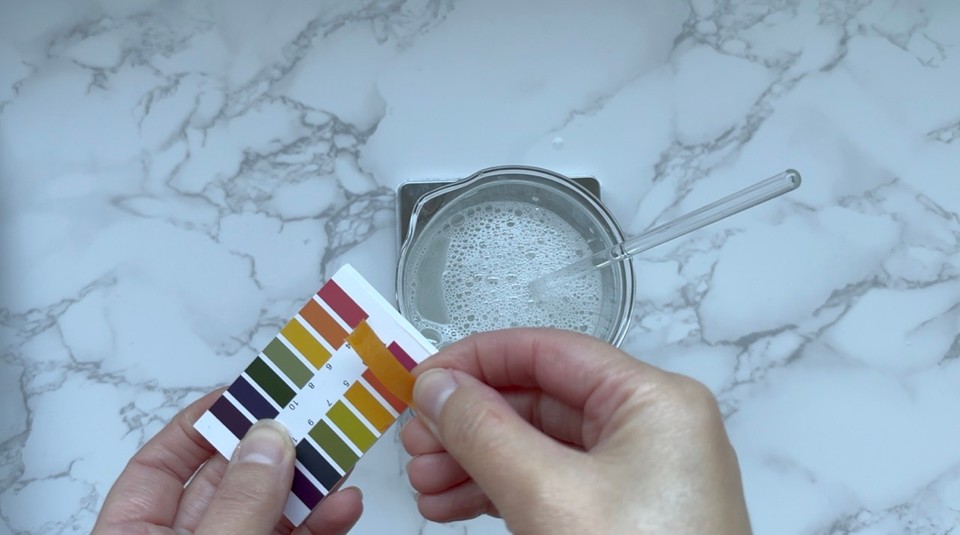
- Add the extracts and, then, the preservative and the fragrance. Stir to combine.
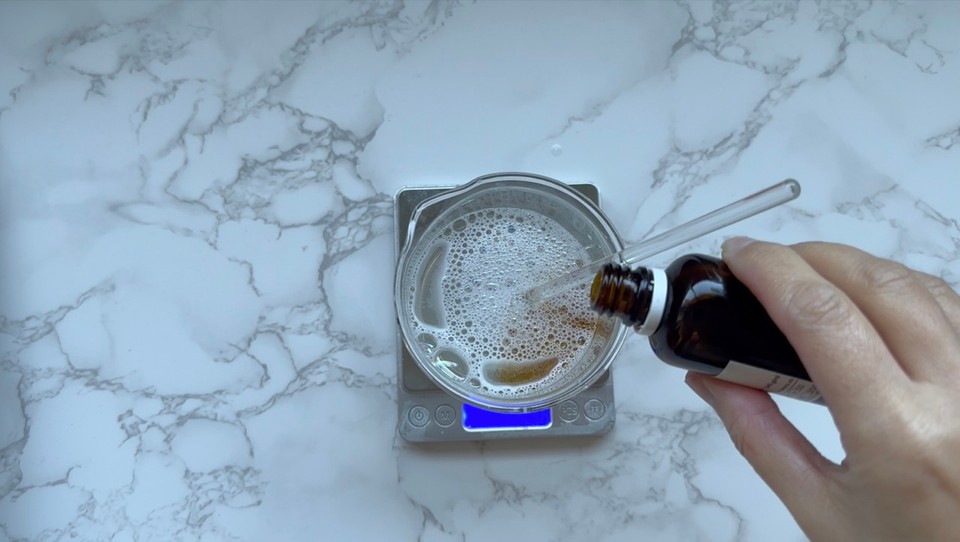
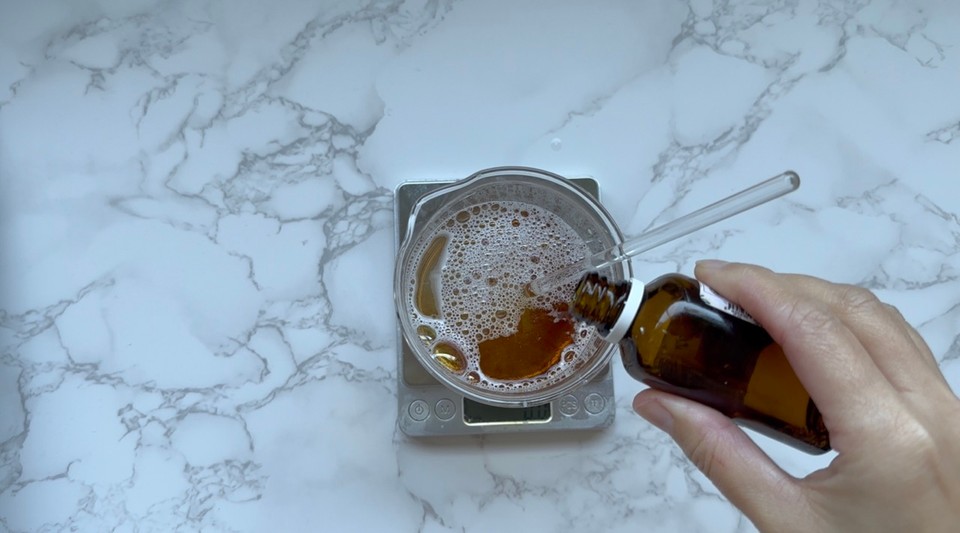
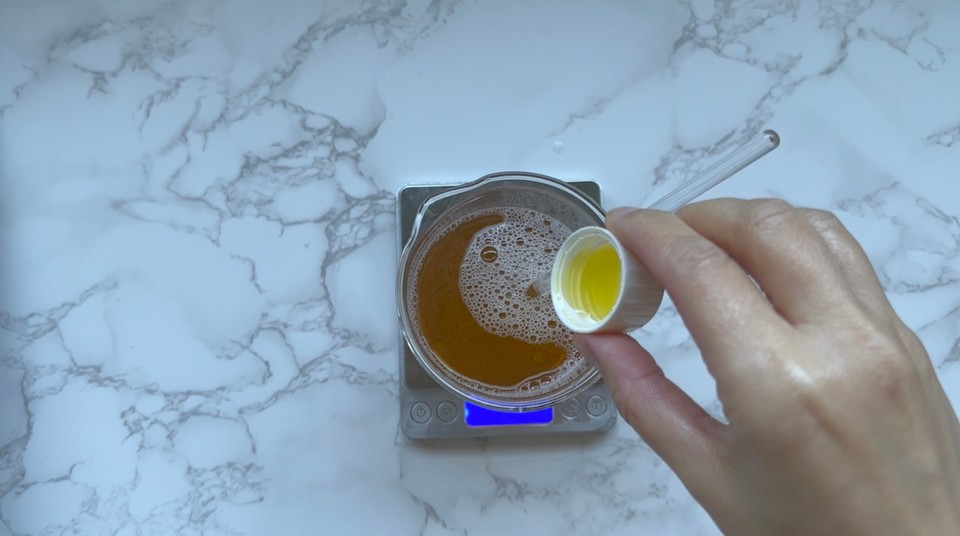
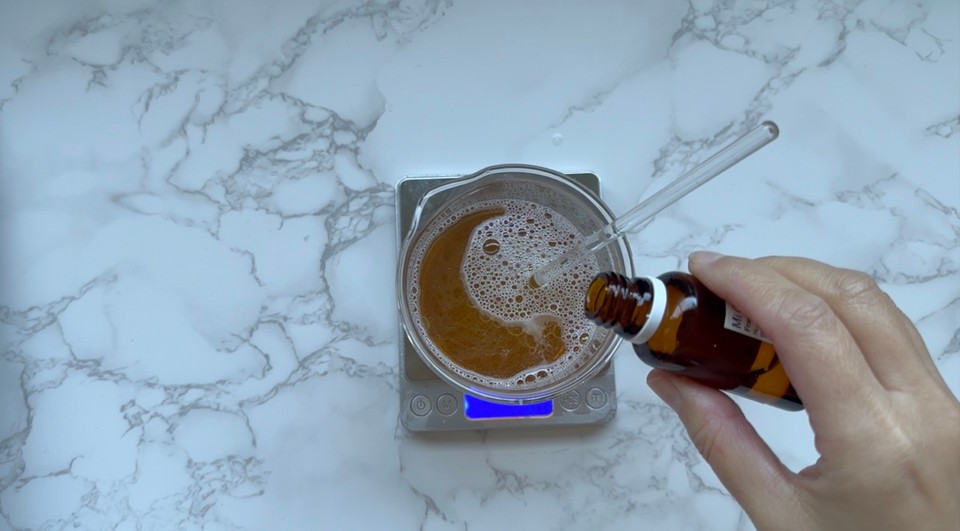
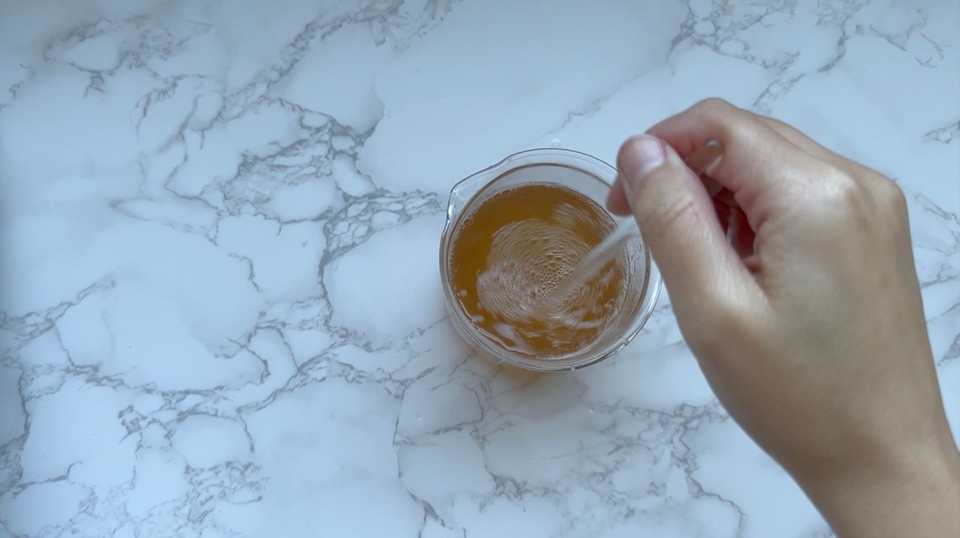
- Recheck the pH to ensure your final product has a pH between 3.8 and 4.3. Pour the cleanser into a foam bottle.
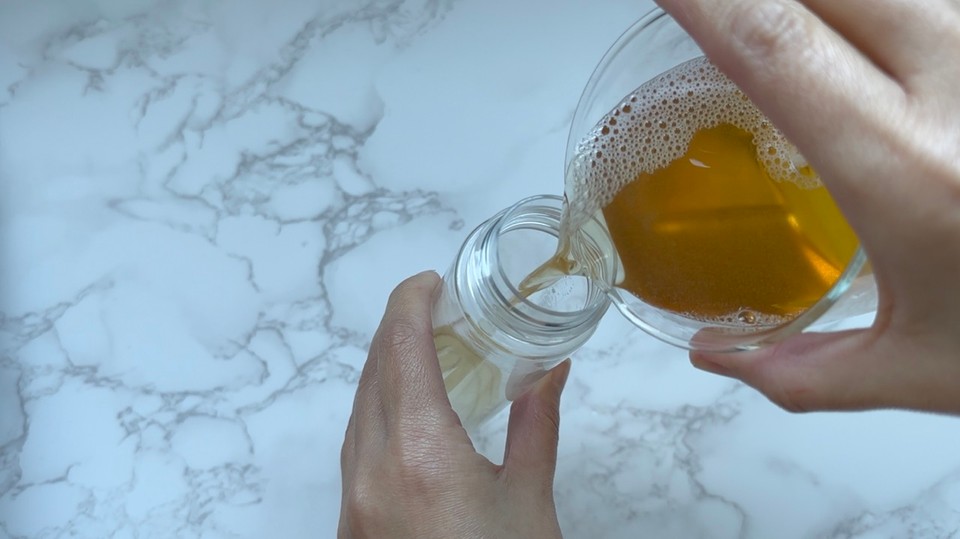
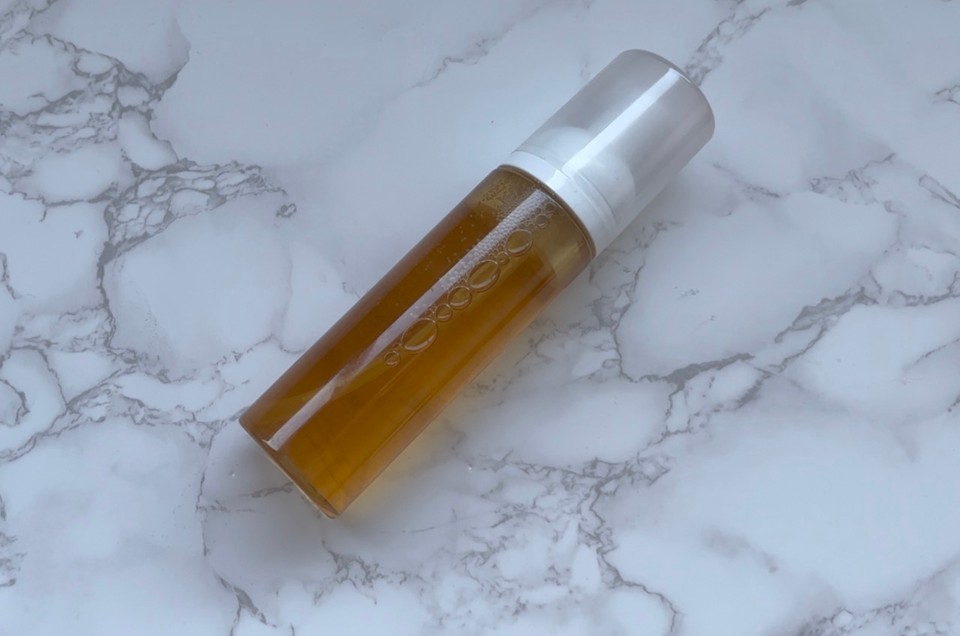
- Use the glycolic face cleanser to wash your face and body. Ensure not to use the cleanser on cuts or bruises since it has a very acidic pH. Use sunscreen while using glycolic acid products.
